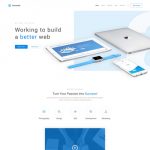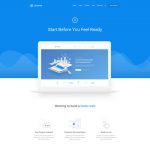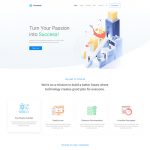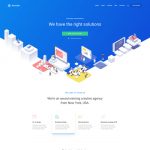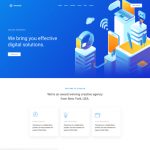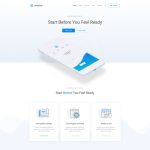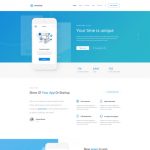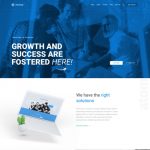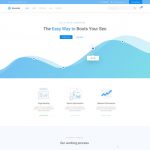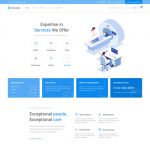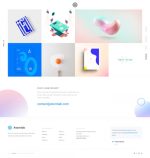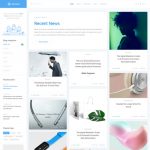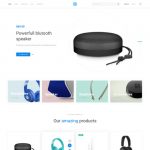Implementing Data-Driven Personalization in Customer Journey Mapping: A Deep Dive into Practical Techniques and Advanced Strategies 11-2025
Introduction
Data-driven personalization has become a cornerstone of effective customer journey mapping, enabling businesses to tailor experiences with precision. While foundational concepts are well-understood, implementing sophisticated, actionable personalization requires technical rigor, strategic planning, and an understanding of the nuanced challenges involved. This article provides an in-depth exploration of how to operationalize data-driven personalization, emphasizing concrete, step-by-step techniques that go beyond surface-level advice, drawing on real-world applications and expert insights.
Table of Contents
- Establishing Data Collection Frameworks for Personalization in Customer Journey Mapping
- Data Segmentation and Customer Profiling Techniques
- Applying Machine Learning Algorithms for Personalization Triggers
- Designing and Implementing Data-Driven Personalization Tactics in Customer Journey Stages
- Technical Infrastructure and Integration for Real-Time Personalization
- Testing, Optimization, and Continuous Improvement of Personalization Strategies
- Common Pitfalls and How to Avoid Them in Data-Driven Personalization
- Case Studies and Practical Application Examples
- Reinforcing the Value of Data-Driven Personalization in Customer Journey Mapping and Broader Business Goals
1. Establishing Data Collection Frameworks for Personalization in Customer Journey Mapping
a) Identifying Key Data Sources: CRM, Web Analytics, Social Media, Transactional Data
Begin by mapping out all relevant data sources that can inform personalization. Integrate your Customer Relationship Management (CRM) system to capture customer profiles, interactions, and purchase history. Use advanced web analytics platforms like Google Analytics 4 or Adobe Analytics to track browsing behavior, time spent, and engagement patterns. Incorporate social media listening tools such as Brandwatch or Sprinklr to understand sentiment and social interactions. Finally, leverage transactional databases to gather real-time purchase data, cart abandonment rates, and order histories. To maximize data richness, set up a centralized data warehouse or data lake that consolidates these sources into a unified view.
b) Implementing Data Capture Technologies: Tagging, SDKs, IoT Sensors
Deploy advanced tagging strategies using Google Tag Manager or Tealium to embed custom pixels that track user interactions across web and mobile platforms. Utilize SDKs for mobile apps to capture in-app behavior and segment users based on app engagement. For physical retail or IoT-enabled environments, install sensors that monitor foot traffic, dwell time, and product interactions. These sensors can feed data directly into your data platform, enabling hyper-localized personalization. Ensure that all data capture points are configured with fallback mechanisms to prevent data loss and maintain accuracy.
c) Ensuring Data Privacy and Compliance: GDPR, CCPA, Best Practices for Consent Management
Implement comprehensive consent management platforms such as OneTrust or TrustArc to obtain explicit user permissions before data collection. Design transparent privacy notices that clearly explain what data is collected and how it will be used, allowing users to opt-in or opt-out. Use anonymization and pseudonymization techniques to protect personally identifiable information (PII). Regularly audit your data collection processes to ensure compliance with GDPR, CCPA, and other relevant regulations. Train your teams on privacy best practices to foster a culture of trust and responsibility.
2. Data Segmentation and Customer Profiling Techniques
a) Creating Dynamic Customer Segments Based on Behavior and Demographics
Move beyond static segmentation by implementing dynamic segments that update in real-time. Use clustering algorithms such as K-Means or DBSCAN on features like purchase frequency, average order value, browsing patterns, and demographic attributes. For example, create a segment for “High-Value Engaged Customers” who frequently purchase premium products and spend significant time on specific categories. Automate the segment updating process via scheduled ETL workflows in your data pipeline, ensuring that marketing campaigns target the most relevant audiences at all times.
b) Building Real-Time Customer Profiles Using Data Aggregation Tools
Utilize tools like Apache Kafka or Confluent Platform to stream customer data into a real-time processing environment. Combine data from web, mobile, CRM, and transactional sources using stream processing frameworks such as Apache Flink or Spark Streaming. This allows you to construct evolving customer profiles that reflect recent interactions. For instance, if a customer views multiple product categories within a session, update their profile to include recent interests, enabling timely and relevant recommendations.
c) Utilizing Data Enrichment to Enhance Customer Segmentation Accuracy
Enhance your customer data by integrating third-party datasets such as firmographics, psychographics, or social determinants. Use APIs from data providers like Clearbit or Demographics.io to append additional attributes to your existing profiles. This enrichment enables more refined segmentation, e.g., identifying high-potential prospects based on firm size or lifestyle indicators, which improves targeting precision and personalization effectiveness.
3. Applying Machine Learning Algorithms for Personalization Triggers
a) Selecting Suitable Algorithms: Clustering, Predictive Modeling, Recommender Systems
Choose algorithms aligned with your personalization goals. Clustering algorithms like Hierarchical Clustering or Gaussian Mixture Models identify naturally occurring groups within your data, suitable for segment-based personalization. Predictive models such as Logistic Regression or Gradient Boosted Trees forecast customer behaviors like churn risk or likelihood to purchase. Recommender systems, including Collaborative Filtering or Content-Based Filtering, suggest relevant products or content based on user similarity or item attributes. Use platform-specific ML tools like Google Cloud AI Platform or AWS SageMaker for scalable model development.
b) Training and Validating Models with Customer Data Sets
Prepare datasets by cleaning and normalizing features such as purchase history, engagement metrics, and demographic info. Split data into training, validation, and test sets using stratified sampling to preserve class distribution. Employ cross-validation to tune hyperparameters like number of clusters or depth of decision trees. Evaluate models with metrics such as ROC-AUC for classification or RMSE for regression tasks. Maintain version control with tools like MLflow or DVC, ensuring reproducibility and continuous improvement.
c) Setting Up Automated Trigger Points for Personalized Content Delivery
Implement event-driven architectures using serverless functions (AWS Lambda, Google Cloud Functions) that listen for specific signals, such as a high propensity to purchase or cart abandonment. Integrate these triggers with your personalization engine to serve tailored content instantly. For example, upon detecting a customer’s high engagement score, automatically display a personalized offer or product bundle. Use real-time decision rules combined with machine learning scores to optimize the timing and context of personalization.
4. Designing and Implementing Data-Driven Personalization Tactics in Customer Journey Stages
a) Personalization at Awareness Stage: Content Recommendations Based on Browsing History
Leverage real-time browsing data to serve tailored content, such as blog posts, videos, or product highlights. Use session-based clustering to identify visitor interests and dynamically generate personalized landing pages. For example, if a visitor spends significant time on eco-friendly products, prioritize eco-conscious content and messaging. Use a Content Management System (CMS) integrated with your personalization engine to automate content variations based on user clusters or individual profiles.
b) Personalization During Consideration: Dynamic Product Recommendations and Chatbots
Implement recommendation engines that adapt in real-time to user actions, such as viewing multiple product categories or adding items to carts. Use collaborative filtering models trained on historical data to suggest complementary or alternative products. Integrate AI-powered chatbots that utilize customer profile data to answer queries with personalized product suggestions, offer discounts, or provide tailored content. Use APIs to connect these personalization components seamlessly into your website or app.
c) Post-Purchase Personalization: Follow-up Emails, Loyalty Offers, and Feedback Solicitation
Automate personalized post-purchase communications based on transaction data and customer preferences. Use dynamic email templates that incorporate recent purchase details, personalized loyalty offers, or product care tips. Incorporate feedback surveys tailored to the specific experience or product purchased. Use predictive analytics to identify customers at risk of churn and proactively engage with targeted retention offers. Leverage customer data to continuously refine your messaging and improve lifetime value.
5. Technical Infrastructure and Integration for Real-Time Personalization
a) Choosing a Customer Data Platform (CDP) or Data Management Platform (DMP)
Select a scalable CDP such as Segment or Treasure Data that consolidates your customer data into a unified profile. Ensure the platform supports real-time data ingestion, profile stitching, and audience segmentation. Verify API availability for seamless integration with your existing martech stack. Prioritize platforms that enable easy data activation across channels and support compliance features.
b) Integrating Personalization Engines with Existing Martech Stack: CMS, Email, E-commerce Platforms
Use APIs and webhooks to connect your personalization engine with Content Management Systems (e.g., Adobe Experience Manager), email marketing platforms (e.g., HubSpot, Mailchimp), and e-commerce solutions (e.g., Shopify, Magento). Implement server-side or client-side SDKs to enable real-time data exchange. For example, embed personalization scripts that dynamically adjust webpage content based on user profiles fetched from your data platform. Establish event pipelines to sync customer actions immediately and trigger personalized responses.
c) Ensuring Low Latency and Scalability for Real-Time Data Processing
Deploy edge computing solutions and CDN caching strategies to minimize latency at the user interface level. Use distributed data processing frameworks such as Apache Flink or Kafka Streams to handle high-throughput data streams efficiently. Implement horizontal scaling for your data pipelines and ML inference services to accommodate traffic spikes. Regularly monitor system performance using tools like Datadog or New Relic, and optimize data pipelines by pruning unnecessary data and employing in-memory caches for frequently accessed profiles.
6. Testing, Optimization, and Continuous Improvement of Personalization Strategies
a) Setting Up A/B and Multivariate Testing for Personalization Variations
Design experiments where different personalization algorithms or content variations are randomly served to segments of your audience. Use tools like Google Optimize, Optimizely, or VWO to implement tests. Track key metrics such as click-through rates, conversion rates, and average order value. Employ statistical significance testing (e.g., Chi-square, t-tests) to determine winning variants. Automate test rotation and analysis to enable rapid iteration.
b) Monitoring Key Metrics: Conversion Rate, Engagement, Customer Satisfaction
Implement dashboards using Tableau, Power BI, or Looker that visualize real-time KPIs. Set alerts for significant deviations, indicating potential issues or opportunities. Conduct cohort analysis to assess how personalization impacts different customer segments over time. Use customer satisfaction surveys and Net Promoter Score (NPS) metrics to gauge experiential quality, feeding this data back into your personalization refinement process.



